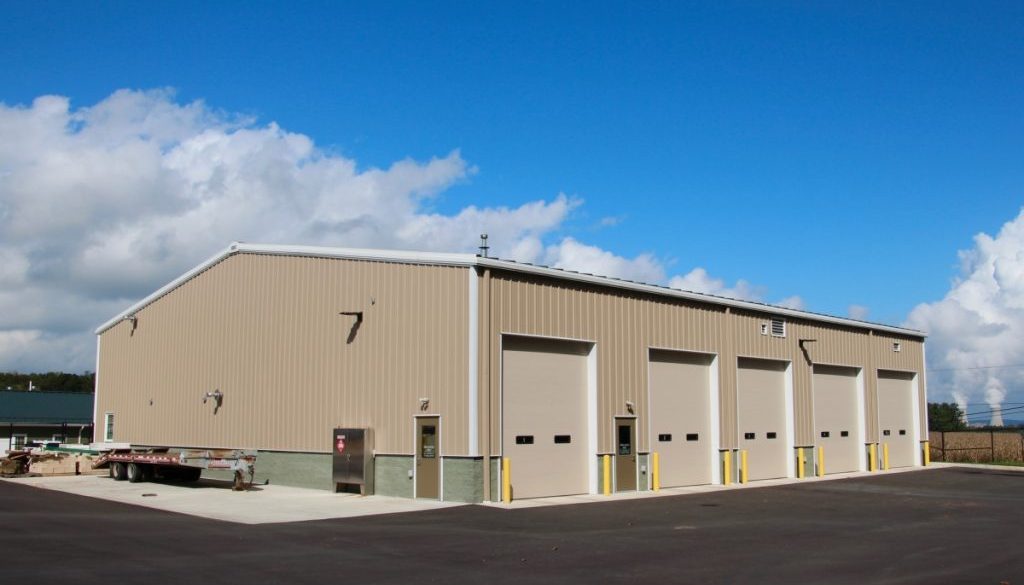Investing in Suburban vs. Urban Commercial Properties
Investing in commercial properties in suburban versus urban areas is a pivotal decision for many investors. Understanding the pros and cons can significantly impact your investment strategy.
Investing in Suburban vs. Urban Commercial Properties
Investing in commercial real estate is a strategic endeavor that requires careful consideration of location, market demand, and potential return on investment. This blog post delves into the nuances of investing in suburban versus urban commercial properties, exploring their unique benefits and challenges. We will provide insights into market trends, investment potential, and the various factors investors need to consider when choosing between these two environments.
Introduction
The landscape of commercial property investment is evolving, driven by changing demographics, economic shifts, and lifestyle preferences. With a growing number of businesses seeking space to operate, the choice between suburban and urban locations has become increasingly significant. Suburban areas often promise lower entry costs and potential for community growth, while urban centers typically offer higher foot traffic and visibility. This article aims to unpack the complexities of investing in these two types of commercial properties, examining key factors like market demand, tenant types, and long-term investment strategies.
Understanding Urban Commercial Properties
Urban commercial properties are situated in densely populated areas, typically characterized by bustling activity and high demand. Here are some compelling points to consider when investing in urban locations:
- High Demand: Urban centers often boast a high demand for commercial space due to their proximity to a large customer base. Businesses, including retail and service providers, thrive in environments where foot traffic is abundant.
- Accessibility: Urban properties generally have excellent public transportation links, making them easily accessible for employees and customers. This is particularly beneficial for businesses that rely on walk-in traffic.
- Diverse Tenant Mix: Urban areas attract a diverse range of tenants, from startups to established corporations. This variety can spread risk across various sectors, providing a buffer against economic downturns.
- Potential for Higher Returns: Although initial investment costs in urban areas can be higher, the potential for appreciation and rental income tends to be more substantial. According to recent studies, urban commercial properties can yield returns that exceed 10% in high-demand markets.
- Challenges: Despite their advantages, urban properties come with challenges such as higher initial costs, more stringent zoning regulations, and increased competition among businesses. Investors must be prepared to navigate these hurdles.
The Appeal of Suburban Commercial Properties
Suburban commercial properties offer a distinct set of advantages that can be appealing to certain investors. Here are the key aspects to consider:
- Lower Entry Costs: Typically, the cost of purchasing or leasing suburban commercial properties is lower than that of urban counterparts. This makes it an attractive option for investors seeking to expand their portfolios without incurring significant debt.
- Growing Demand: As more people move to suburban areas, there is a rising demand for commercial space, particularly for retail and office use. This trend has been accelerated by the shift towards remote work, prompting many businesses to seek locations outside urban centers.
- Community Focus: Suburban properties often cater to local communities, fostering a loyal customer base. Businesses that prioritize community engagement can thrive in these environments.
- Reduced Competition: Investors may find less competition in suburban markets, allowing for more favorable negotiation terms and opportunities for growth without the intense pressure often found in urban settings.
- Potential Downsides: However, suburban properties may face challenges such as lower foot traffic compared to urban locations and potential difficulties in attracting tenants. Investors must conduct thorough market research to identify viable opportunities.
Comparative Analysis: Urban vs. Suburban
When deciding between urban and suburban commercial properties, it’s important to weigh the pros and cons of each. Here’s a comparative analysis:
- Market Trends: Urban areas tend to be more reactive to economic changes, with demand fluctuating based on population shifts and economic conditions. Conversely, suburban markets may exhibit slower, steadier growth patterns.
- Tenant Stability: Urban areas often see a rapid turnover of tenants, driven by higher competition and market pressures. In contrast, suburban tenants may remain longer due to a smaller pool of competitors, leading to increased tenant stability.
- Investment Horizon: Urban properties might be better suited for short- to medium-term investments, especially for businesses focused on immediate growth. Suburban properties can be ideal for long-term investments, particularly as communities expand and develop.
- Regulatory Environment: Urban properties are likely to face more stringent zoning laws and regulations, which can complicate development projects. Suburban properties may benefit from more flexible regulations, facilitating easier development and expansion.
Best Practices for Investing in Commercial Properties
Whether you choose to invest in suburban or urban commercial properties, adopting best practices can enhance your investment strategy:
- Conduct Thorough Market Research: Understand the demographics, economic trends, and consumer preferences in both urban and suburban markets. Use data analytics to identify high-potential areas for investment.
- Network with Local Experts: Collaborate with local real estate brokers and business owners to gain insights into market conditions and opportunities. Their expertise can provide invaluable guidance.
- Evaluate Location Factors: Look for properties with excellent accessibility, visibility, and proximity to key amenities. Whether urban or suburban, these factors significantly influence demand.
- Consider Diversification: If feasible, consider diversifying your portfolio by investing in both urban and suburban properties. This can help balance risks and capitalize on various market conditions.
- Understand Tenant Needs: Tailor your property offerings to meet the specific needs of potential tenants. This can involve providing amenities, flexible leasing terms, or customized spaces that cater to their operational requirements.
Future Trends in Commercial Real Estate
As the landscape of commercial real estate continues to evolve, several key trends are emerging that investors should watch:
- Remote Work Influence: The rise of remote work is reshaping the demand for commercial spaces. Many businesses are reevaluating their office needs, leading to increased interest in suburban properties that offer flexibility and reduced overhead costs.
- E-commerce Growth: The surge in e-commerce is driving demand for logistics and distribution centers in suburban areas. Investors who recognize this trend can capitalize on the need for warehousing and fulfillment spaces.
- Sustainability Focus: There is a growing emphasis on sustainable and eco-friendly buildings. Properties that prioritize energy efficiency and sustainable practices are becoming increasingly attractive to both tenants and investors.
- Changing Demographics: Younger generations are moving to suburban areas for affordability and quality of life. This demographic shift may influence the types of businesses that thrive in these regions, prompting investors to consider evolving market needs.
Conclusion
Investing in commercial properties, whether in suburban or urban locales, presents unique opportunities and challenges. By understanding the distinct characteristics of each environment, investors can make informed decisions that align with their financial goals and risk tolerance. Ultimately, the choice between suburban and urban commercial properties depends on various factors, including market conditions, personal preferences, and long-term investment strategies.
As the commercial real estate landscape continues to evolve, staying informed about market trends and adapting to changing demands will be crucial for success. Whether you are considering purchasing a property or seeking to lease commercial space, informed decisions can lead to fruitful investments that yield substantial returns.
Explore your options today to find the perfect commercial property fit for your investment strategy.



